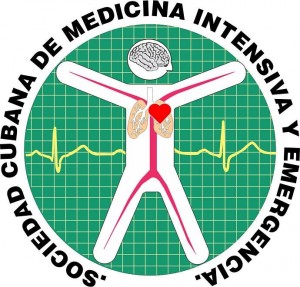Use of non-invasive mechanical ventilation in adults with acute respiratory distress
Palabras clave:
non-invasive ventilation, acute respiratory distress syndrome, behavior, drivingResumen
Acute respiratory failure is one of the presentation forms of dissimilar diseases. For treating acute respiratory failure, the patient requires life support measures, by adequately trained personnel, together with a well-equipped service. Non-invasive mechanical ventilation is one of the variants of ventilatory support that helps and improves the patient's condition. Controversies exist regarding the use of noninvasive mechanical ventilation in subjects suffering from acute respiratory distress. This disease has high morbidity and mortality, especially when it does not receive adequate and timely management. Studies on non-invasive mechanical ventilation and acute respiratory distress are not abundant in the international literature. In Cuba there is lack of multicenter studies, which adjust to our health system and our current conditions. Therefore, the present paper was carried out with the aim of analyzing how patients with acute respiratory distress can benefit from this modality of life support.
Descargas
Citas
1. Pascual Martínez N, Vaquero Barrios JM, Bujalance Cabrera C, Delgado J. Ventilación mecánica no invasiva y oxigenoterapia. España: Elsevier; 2014 [citado: 07/09/2019]. Disponible en: https://www.clinicalkey.es/service/content/pdf/watermarked/3-s2.0-B9788490224144000200.pdf?locale=es_ESs.
2. Oviedo PAA, Cruz AB, Rodríguez AR, Falcón LR. Impacto de la ventilación no invasiva en la unidad de cuidados intensivos. Rev Cub Med Int Emerg. 2016 [citado: 07/09/2019];16(1). Disponible en: http://www.medigraphic.com/pdfs/revcubmedinteme/cie-2017/cie171e.pdf
3. Rittayamai N, Brochard L. Recent advances in mechanical ventilation in patients with acute respiratory distress syndrome. Eur Respir Rev. 2016 [citado: 07/09/2019];24:132-40. Disponible en: https://www.ncbi.nlm.nih.gov/m/pubmed/25726563/
4. Lemiale V, Resche-Rigon M, Mokart D, Pene F, Rabbat A, Azoulay E, et al. Acute respiratory failure in patients with hematological malignancies: outcomes according to initial ventilation strategy. A groupe de recherche respiratoire en reanimation onco-hematologique (Grrr-OH) study. Ann Intensive Care. 2016 [citado: 07/09/2019];5:28. Disponible en: https://www.ncbi.nlm.nih.gov/m/pubmed/26429355/
5. Demoule A, Chevret S, Carlucci A, Kouatchet A, Jaber S, Meziani F, et al. Changing use of noninvasive ventilation in critically ill patients: trends over 15 years in francophone countries. Intensive care medicine. 2016 [citado: 07/09/2019];42:82-92. Disponible en: http://europepmc.org/abstract/med/26464393
6. Essouri S, Carroll C. Noninvasive Support and Ventilation for Pediatric Acute Respiratory Distress Syndrome: Proceedings from the Pediatric Acute Lung Injury Consensus Conference. Pediatr Crit Care Med. 2016 [citado: 07/09/2019];16(5 Suppl 1):S102-10. Disponible en: https://www.ncbi.nlm.nih.gov/m/pubmed/26035360/
7. Yaman A, Kendirli T, Odek C, Ates C, Tasyapar N, Günes M, et al. Efficacy of noninvasive mechanical ventilation in prevention of intubation and reintubation in the pediatric intensive care unit. J Crit Care. 2016 [citado: 07/09/2019];32:175-81. Disponible en: https://www.ncbi.nlm.nih.gov/m/pubmed/26795440/
8. Chidni G, Piastra M, Marchesi T, De Luca D, Napolitano L, Salvo I, et al. Continuous Positive Airway Pressure With Helmet Versus Mask in Infants With Bronchiolitis: An RCT. Pediatr. 2016 [citado: 07/09/2019];135:e868-75. Disponible en: https://www.ncbi.nlm.nih.gov/m/pubmed/25780074/
9. L’Her E, Deye N, Lellouche F, Taille S, Demoule A, Fraticelli A, et al. Physiologic effects of noninvasive ventilation during acute lung injury. Am J Respir Crit Care Med. 2005 [citado: 07/09/2019];172(9):1112-8. Disponible en: https://www.ncbi.nlm.nih.gov/m/pubmed/16081548/
10. Kangelaris KN, Ware LB, Wang CY, Janz DR, Zhuo H, Calfee CS, et al. Timing of Intubation and Clinical Outcomes in Adults with Acute Respiratory Distress Syndrome. Crit Care Med. 2016 [citado: 07/09/2019];44:120-9. Disponible en: https://www.ncbi.nlm.nih.gov/m/pubmed/26474112/
11. Chawla R, Mansuriya J, Modi N, Pandey A, Juneja D, Chawla A, et al. Acute respiratory distress syndrome: Predictors of noninvasive ventilation failure and intensive care unit mortality in clinical practice. J Crit Care. 2016 [citado: 07/09/2019];31:26-30. Disponible en: https://www.ncbi.nlm.nih.gov/m/pubmed/26643859/
12. Carteaux G, Millan-Guilarte T, De Prost N, Razazi K, Abid S, Arnaud T, et al. Failure of Noninvasive Ventilation for De Novo Acute Hypoxemic Respiratory Failure: Role of Tidal Volume. Crit Care Med. 2016 [citado: 07/09/2019];44:282-90. Disponible en: https://www.ncbi.nlm.nih.gov/m/pubmed/26584191/
13. Mosier JM, Sakles JC, Whitmore SP, Hypes CD, Hallett DK, Bloom JW, et al. Failed noninvasive positive-pressure ventilation is associated with an increased risk of intubation-related complications. Ann Intensive Care. 2016 [citado: 07/09/2019];5:4. Disponible en: https://www.ncbi.nlm.nih.gov/pmc/articles/PMC4385202/
14. Meduri G, Bridges L, Shin M, Marik P, Siemieniuk R, Kocak M, et al. Prolonged glucocorticoid treatment is associated with improved ARDS outcomes: analysis of individual patient’s data from four randomized trial and trial-level-meta-analysisof the updated literature. Intensive Care Med. 2016 [citado: 07/09/2019];42:829-40. Disponible en: http://www.ncbi.nlm.nih.gov/pubmed/26508525
15. Liesching T, Kwok H, Hill NS. Acute applications of noninvasive positive pressure ventilation. Chest. 2003 [citado: 08/09/2019];124:699. Disponible en: https://www.ncbi.nlm.nih.gov/m/pubmed/12907562/
16. Patel BK, Wolfe KS, Pohlman AS, Hall JB, Kress JP. Effect of noninvasive ventilation delivered by helmet vs face mask on the rate of endotracheal intubation in patients with acute respiratory distress syndrome: a randomized clinical trial. JAMA. 2016 [citado: 08/09/2019];315:2435-41. Disponible en: https://www.ncbi.nlm.nih.gov/m/pubmed/27179847/
17. Brower RG, Lanken PN, MacIntyre N, Morris A, Ancukiewicz M, Schoenfeld D, et al. Higher versus lower positive end-expiratory pressures in patients with the acute respiratory distress syndrome. N Engl J Med. 2004 [citado: 08/09/2019];351:327-36. Disponible en: https://www.ncbi.nlm.nih.gov/m/pubmed/15269312/
18. Meade MO, Cook DJ, Guyatt GH, Slutsky AS, Arabi YM, Cooper DJ, et al. Ventilation strategy using low tidal volumes, recruitment maneuvers, and high positive end-expiratory pressure for acute lung injury and acute respiratory distress syndrome. JAMA. 2008 [citado: 08/09/2019];299:637-45. Disponible en: https://www.ncbi.nlm.nih.gov/m/pubmed/18270352/
19. Carrillo ER, Sánchez ZMJ, Medveczky ONI, Elizondo AS, Ramírez APM, Sánchez PH. Síndrome de Insuficiencia Respiratoria Aguda, 50 años después. Med Crit. 2017 [citado: 08/09/2019];31(4):246-54. Disponible en: https://www.mediagraphic.com/pdfs/medcri/ti-2017/ti174k.pdf
20. Bos LD, Loeches IM, Marcus J, Schultz MJ. ARDS: challenges in patient care and frontiers in research. Eur Respir Rev. 2018 [citado: 08/09/2019];27:170107. Disponible en: https://www.ncbi.nlm.nih.gov/m/pubmed/29367411/
21. Amato MBP, Meade MO, Slutsky AS, Brochard L. Driving pressure and survival in the acute respiratory distress syndrome. N Engl J Med. 2016 [citado: 08/09/2019];372:747-55. Disponible en: https://www.ncbi.nlm.nih.gov/m/pubmed/25693014/
22. Bellani G, Laffey JG, Pham T, Fan E, Brochard L, Esteban A, et al. Epidemiology, Patterns of Care, and Mortality for Patients with Acute Respiratory Distress Syndrome in Intensive Care Units in 50 Countries. JAMA. 2016 [citado: 08/09/2019];315:788-800. Disponible en: https://www.ncbi.nlm.nih.gov/m/pubmed/26903337/
23. Frat JP, Thille AW, Mercat A, Girault C, Ragot S, Perbet S, et al. High-flow oxygen through nasal cannula in acute hypoxemic respiratory failure. N Engl J Med. 2016 [citado: 08/09/2019];372:2185-96. Disponible en: https://www.ncbi.nlm.nih.gov/m/pubmed/25981908/
24. Cortegiani A, Russotto V, Antonelli M, Azoulay E, Carlucci A, Gregoretti C, et al. Ten important articles of noninvasive ventilation in critically ill patients and insights for the future: A report of expert opinions. BMC Anesthesiol. 2017 [citado: 08/09/2019];17:122. Disponible en: https://www.ncbi.nlm.nih.gov/m/pubmed/28870157/
25. Russotto V, Cortegiani A, Raineri SM, Gregoretti C, Giarratano A. Respiratory support techniques to avoid desaturation in critically ill patients requiring endotracheal intubation: A Systematic review and meta-analyses. J Crit Care. 2017 [citado: 08/09/2019];41:98-106. Disponible en: https://www.ncbi.nlm.nih.gov/m/pubmed/28505486/
26. Gregoretti C, Pisani L, Cortegiani A, Ranieri VM. Noninvasive ventilation in critically ill patients. Crit Care Clin. 2016 [citado: 08/09/2019];31:435-57. Disponible en: https://www.ncbi.nlm.nih.gov/m/pubmed/26118914/






